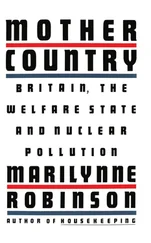Some of the more radical measures which were in the Act fell through the mesh of its permissive powers – those that allowed, but did not oblige local authorities to do things, or which laid a duty to do them but only after the minister had set a starting date. Thus the Act provided not just for secondary education for all up to fifteen, but for a later rise to sixteen ‘as soon as it has become practicable’. 11It was to take nearly thirty years for that to happen. Equally, the Act allowed local authorities to provide both nursery education and part-time attendance at county colleges up to eighteen, both to become compulsory on a day to be decided. That day never came, so that high-grade technical education, a concern of countless official reports from the mid-nineteenth century onwards, fell by the wayside. This occurred despite Butler having made it item number one on the list of three issues to be resolved that he had sent Churchill just weeks after his appointment. His officials’ Green Book, too, had stressed the ‘urgent need, in the interests of the industrial and commercial prosperity of this country, to secure an improved system of technical and commercial training’. 12The Green Book had even toyed with centralising higher technical education, questioning whether it can ‘properly continue to be left to local initiative’. Butler himself minuted R. S. Wood asking how it could be fitted into the Bill. ‘Politics is said to be “l’art du possible”. The question is – what is possible; and what is our order of priority?’ 13
The issue was discussed at length with the Ministry of Labour. Bevin, remarkably, favoured school-leavers being sent at fourteen to state boarding schools in redundant service camps for two years to be given a blend of academic and practical skills, before receiving further education and training until they were twenty. As Minister of Labour, no one knew better than Bevin the shortage of skilled manpower. But when a remarkably similar programme, which included a state takeover of the public schools, was put to the Conservative Central Council in September 1942 it was thrown out root and branch by the party’s rank and file as a form of fascism, leaving Butler looking for less dramatic solutions. 14
One of the key difficulties may well have been, as Barnett argues, that no industrial or commercial body brought pressure on the Board of Education ‘of that relentless and effective kind exerted by the churches’. As a result ‘the crucial question of providing the nation with an education for capability from primary school up to technical university equal to that of her competitors was squeezed away to the sidelines’. 15A committee was set up with the blessing of the TUC and the British Employers’ Federation to examine day-continuation education. It reported in September 1943, after the White Paper but before the Bill. But another committee which examined higher technical education under Lord Eustace Percy was not even appointed until April 1944, when the Bill was well into its parliamentary run. It finally reported, after the Act took effect, in 1945.
The outcome was that the Act did place a duty on local authorities to provide ‘adequate facilities for further education’. It also provided powers for the minister, as soon as it was considered ‘practicable to do so’, to require LEAs to draw up plans for more day-continuation colleges, just forty of which had been established by 1938 and only one of which, in Rugby, was compulsory. 16In the event, no minister ever found it practical so to do. Barnett argues that the Act ‘offered not so much an executive operational framework as an opened gate to an empty construction site on which local authorities might or might not (depending on their zeal and the effectiveness of the ministry’s nagging) build the technical and further education system that Britain so desperately needed’. 17
The problem, however, was that the local authorities were not the only players in this game. As Butler’s talks with Bevin illustrate, responsibilities for education and training were divided within government. Training had always always been seen as a matter for employers, while even education had taken time to become a full-blown responsibility for the state. Technical education and vocational training thus fell between the stools of employers, the Ministry of Labour and the Ministry of Education. The county colleges were to depend on a reform of apprenticeships (then five years long) and industrial training which the employers never undertook. In the full employment after the war, many were only too happy to take on unskilled and poorly educated teenagers and still make profits without the need to invest in the training and day release that the county colleges required. As for the unions, training was never more than a minor bargaining chip in industrial relations. The drive from industry for better training existed far more in industrialists’ rhetoric than in reality. In the schools themselves, technical education fell between the grammars, whose highest aim was to produce entrants for universities that remained heavily arts-based, and secondary moderns, providing the low-grade practical education that was designed for their ‘iron’ children.
The universities remained largely outside the Act, save for strengthened powers for local authorities to provide student grants. They were after all independent, responsible neither to central nor to local government, though part-funded through the University Grants Committee. Nursery schooling suffered the same fate as technical education – provided for in the Act, but to be compulsory only when a date was set. Butler had rated both as priorities. ‘Equality of opportunity would remain something of an empty phrase if children entered the period of compulsory schooling from conditions of family deprivation, or left it to pursue what Churchill called blind-alley occupations,’ he said in 1971, explaining his Act’s nursery and technical education provisions. But nearly thirty years on from 1944, he judged pre-schooling to be still ‘patently inadequate’, while fewer than half of under-eighteens were released from industry for voluntary, not mandatory, part-time education. A price was paid in all this in terms of Britain’s fitness to fight its way in a competitive world.
If one concept, one ‘guiding principle’ to use Kenneth Baker’s phrase, underpinned the 1944 Act it was equality of opportunity – the aim Butler referred to in his memoirs and which was spelt out in the White Paper’s introduction. The battle to define precisely what equality of opportunity meant, however, was to dominate much of the history of post-war education.
For some, for whom comprehensive schooling was to become the keystone definition, Butler’s White Paper and Act with their tripartite (or tri-partheid as some put it with acid wit) system of grammars, technical and secondary moderns came to be seen as a thoroughly ‘Tory’ measure 18– the word here being firmly used as a term of abuse. In fact the Act was far subtler than that. In itself it did not set out the tripartite system, even though the White Paper made clear that was what was expected. The Act merely required education according to pupils’ ‘ages, abilities and aptitudes’, opening the door to multilateral or comprehensive schools. It did so because in fact there was no absolute consensus, even in official circles, about the ideal organisation of secondary education – or even the precise purpose of education.
The White Paper reveals the struggle in the official mind to balance four aims: equality of opportunity with diversity of provision; and parity of esteem between the different schools which would provide that diversity with social unity. For education, in this coalition White Paper, was not just about developing people’s talents. It included, as Butler’s assertion quoted at the beginning of this chapter shows, an element of what was to become the hotly disputed issue of ‘social engineering’ in education. The White Paper 19stated – providing a talismanic slogan for ever after for those who favoured comprehensives – that: ‘There is nothing to be said in favour of a system which subjects children at the age of eleven to the strain of competitive examination on which not only their future schooling but their future careers may depend.’ Instead, children should ‘be classified, not on the results of a competitive test, but on an assessment of their individual aptitudes largely by such means as school records, supplemented, if necessary, by intelligence tests’.
Читать дальше
![Nicholas Timmins The Five Giants [New Edition]: A Biography of the Welfare State обложка книги](/books/701739/nicholas-timmins-the-five-giants-new-edition-a-cover.webp)











